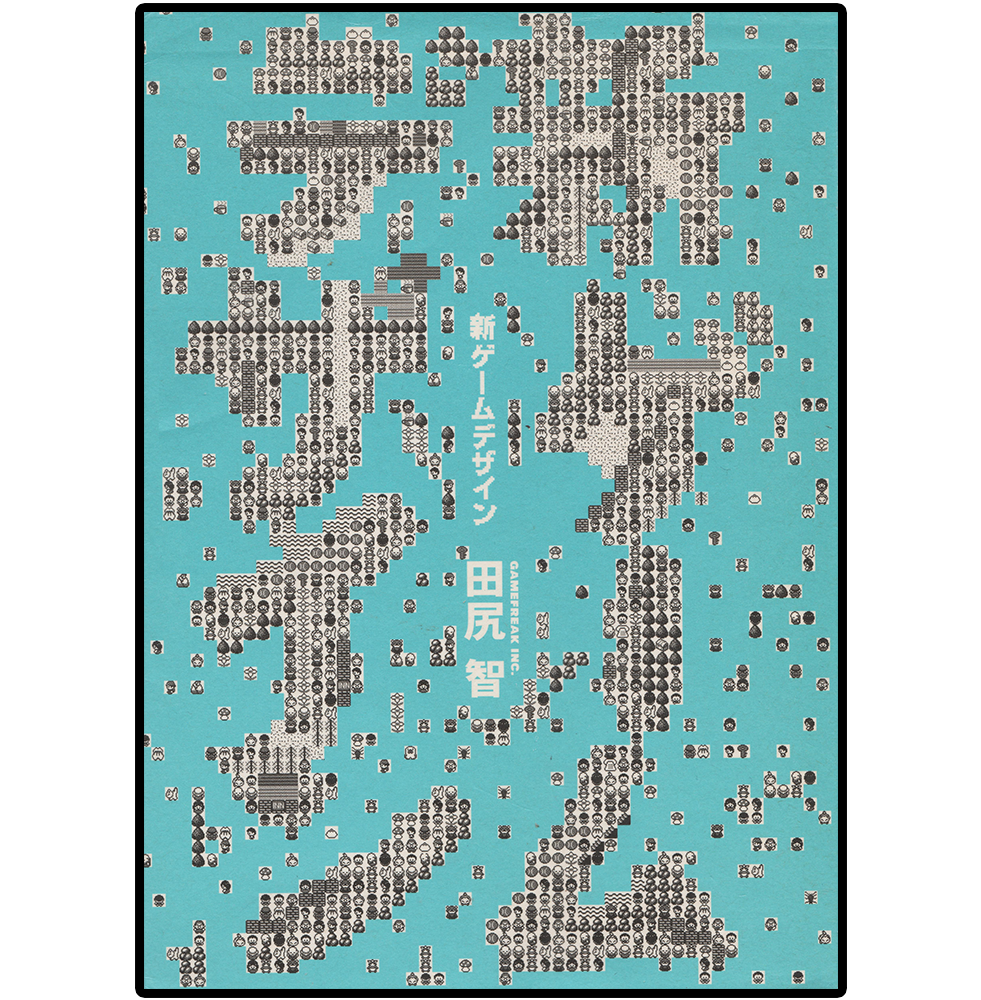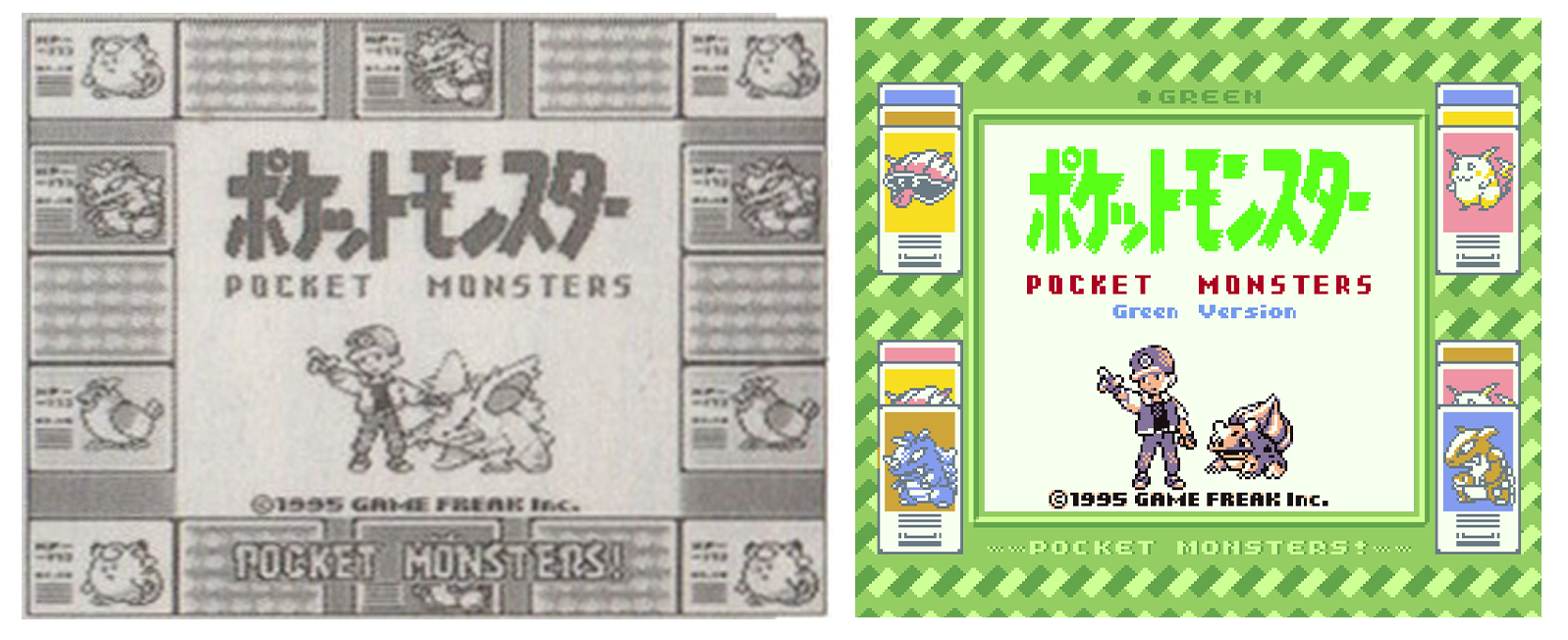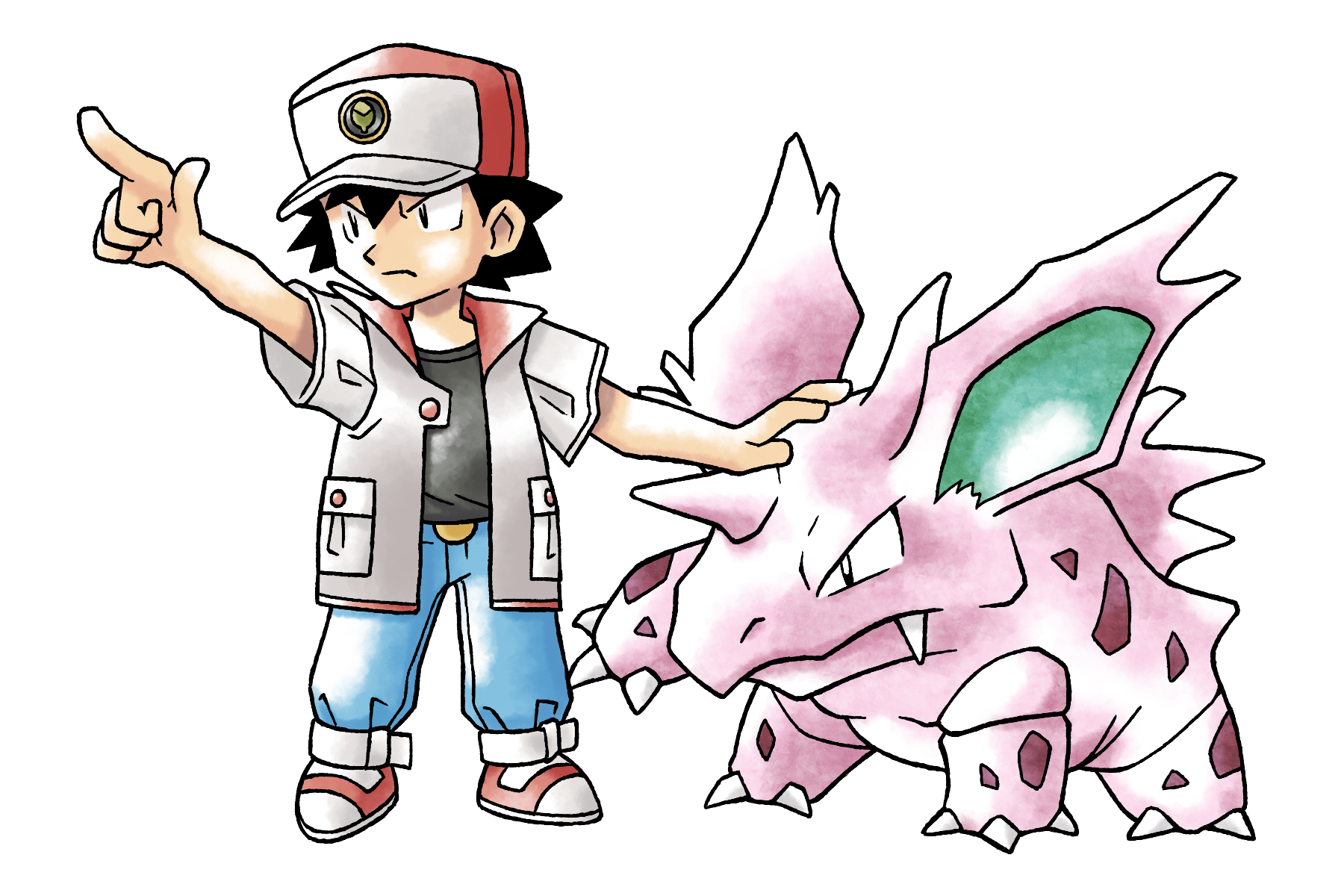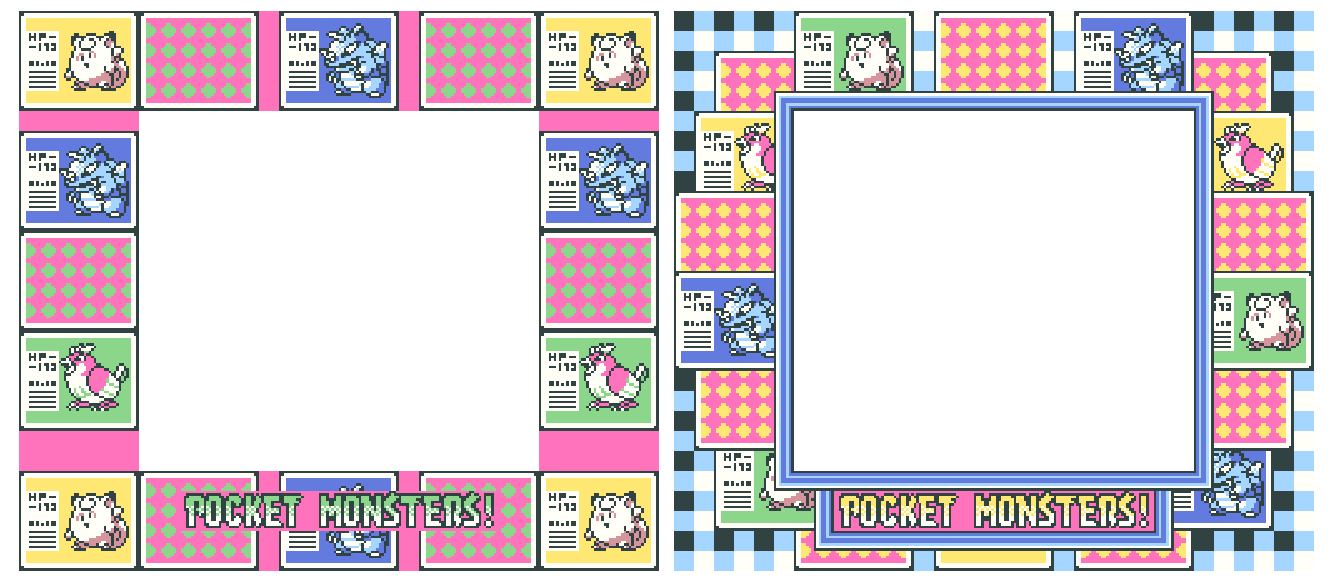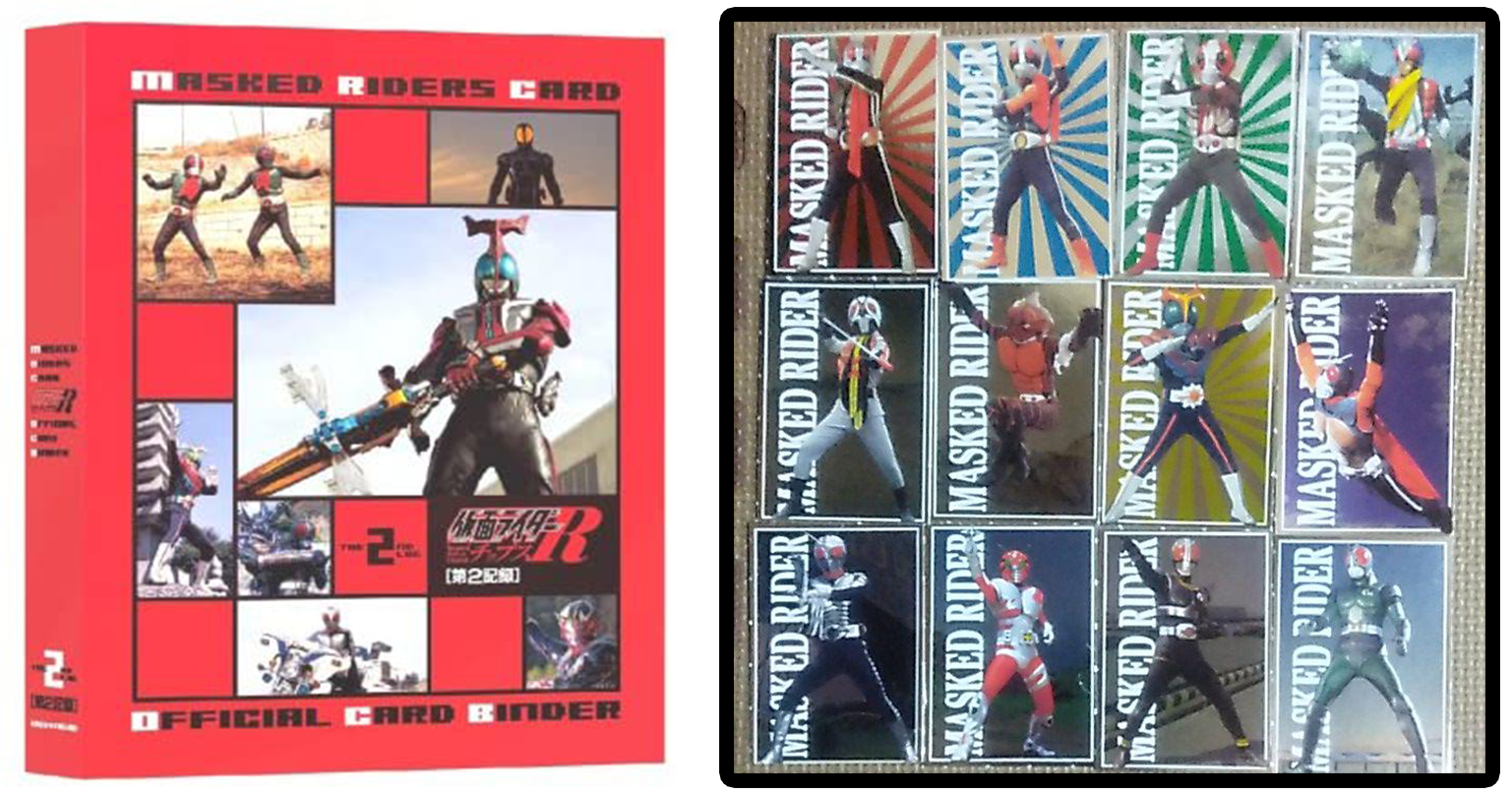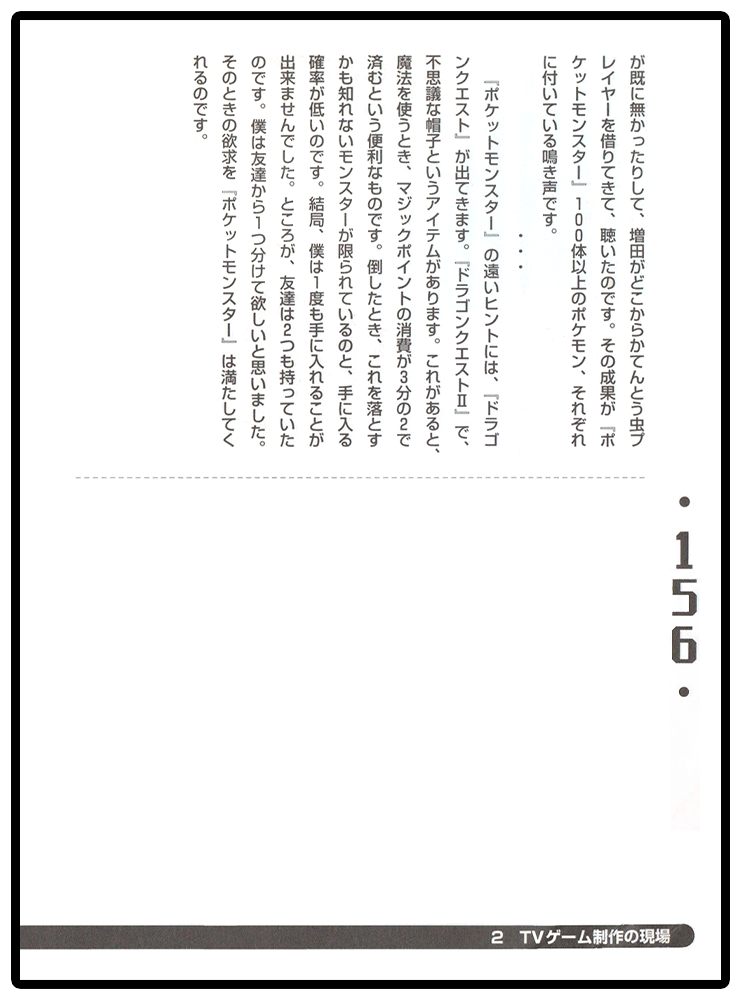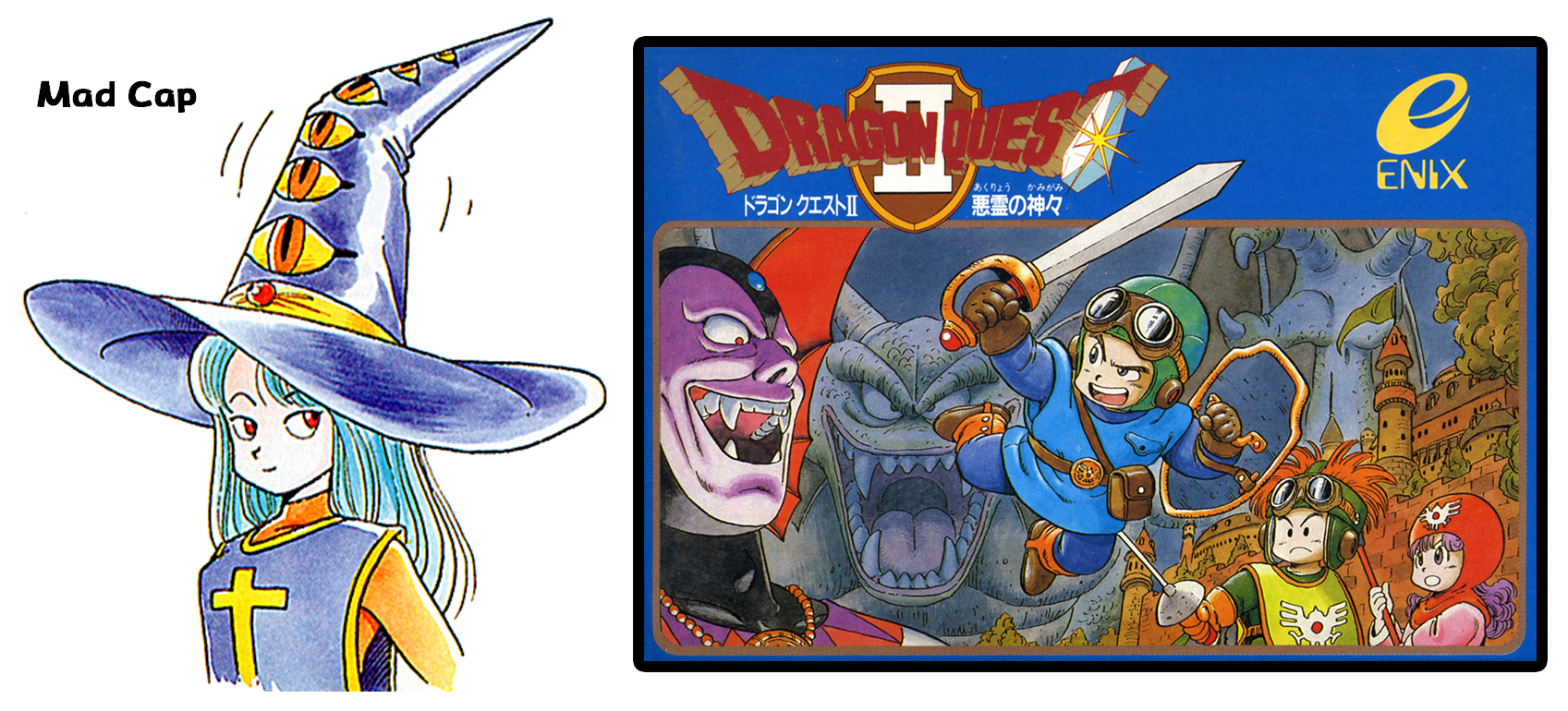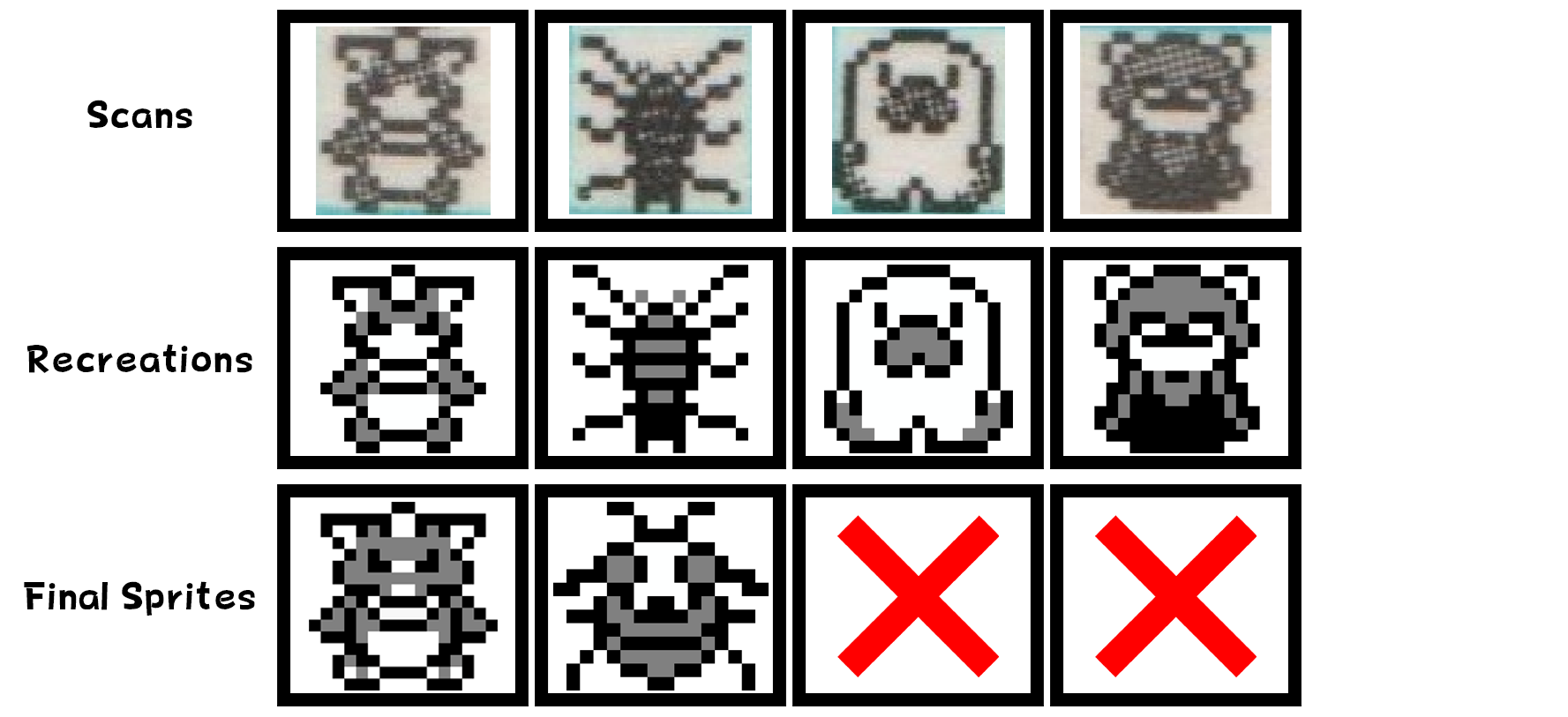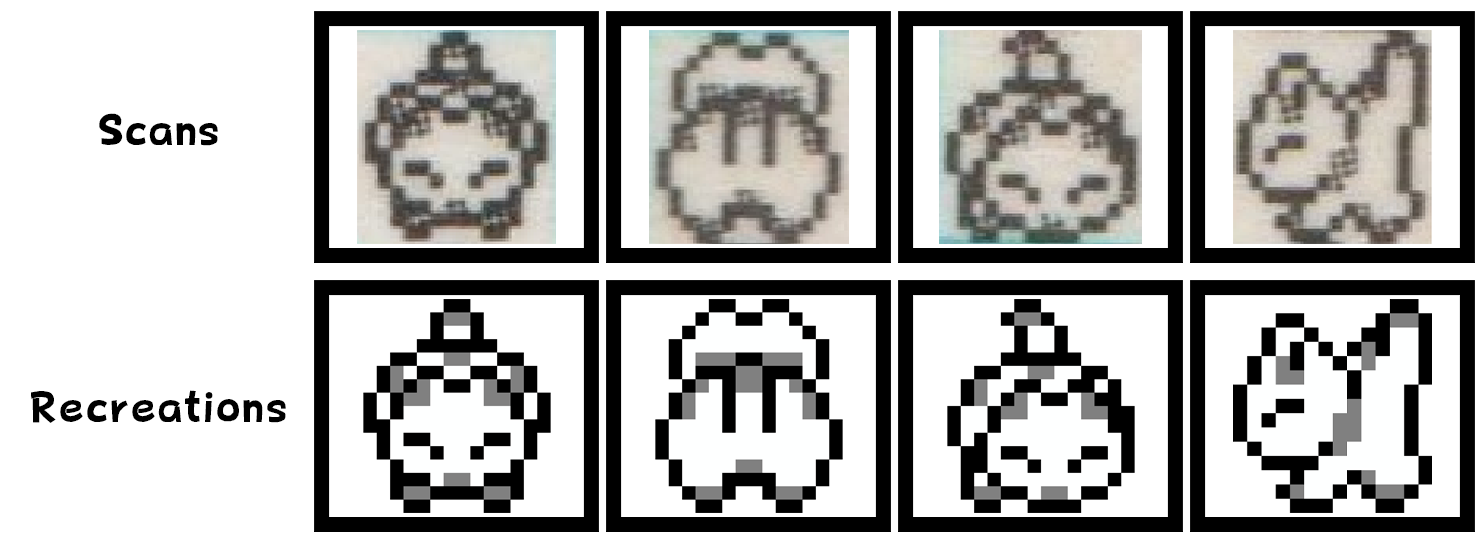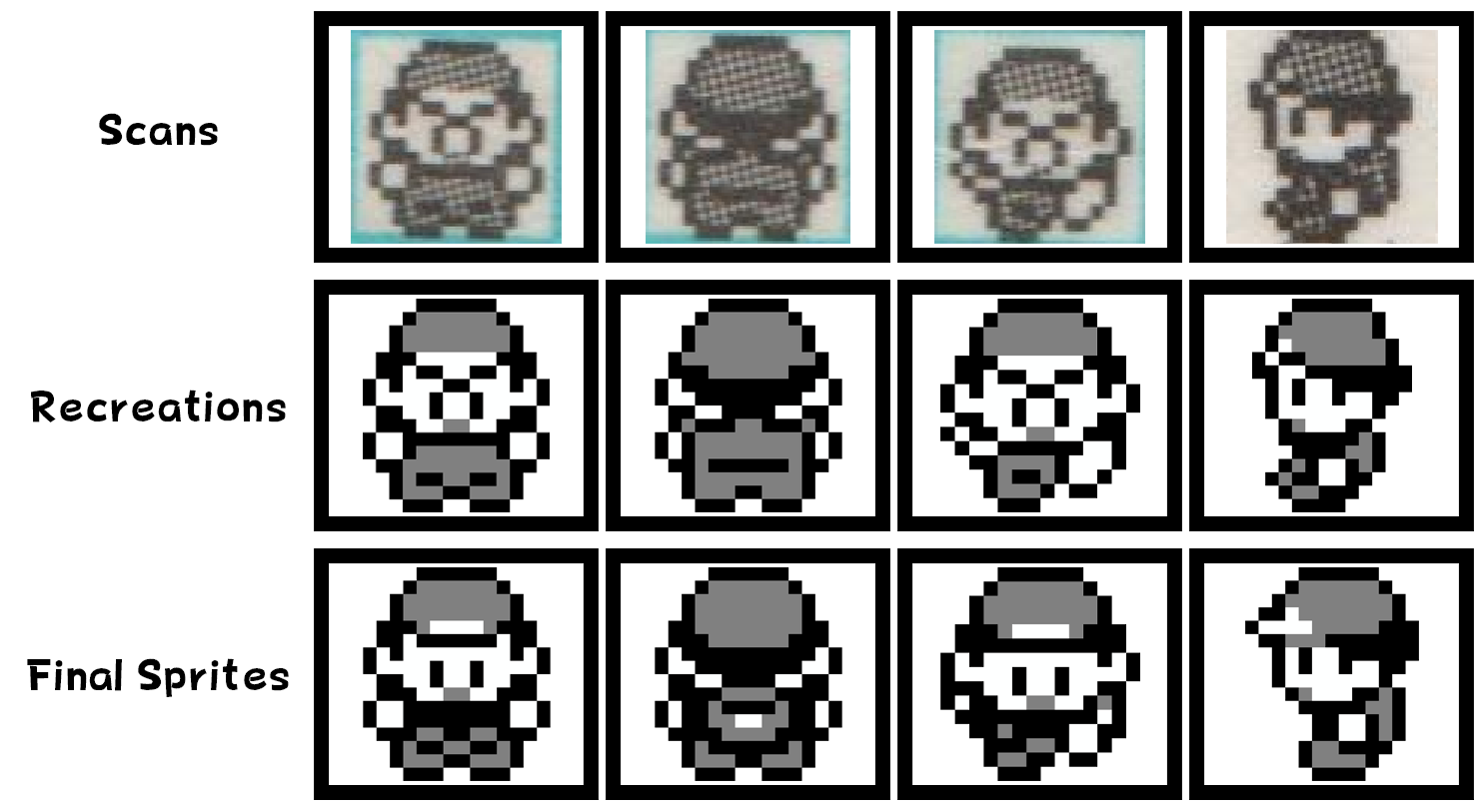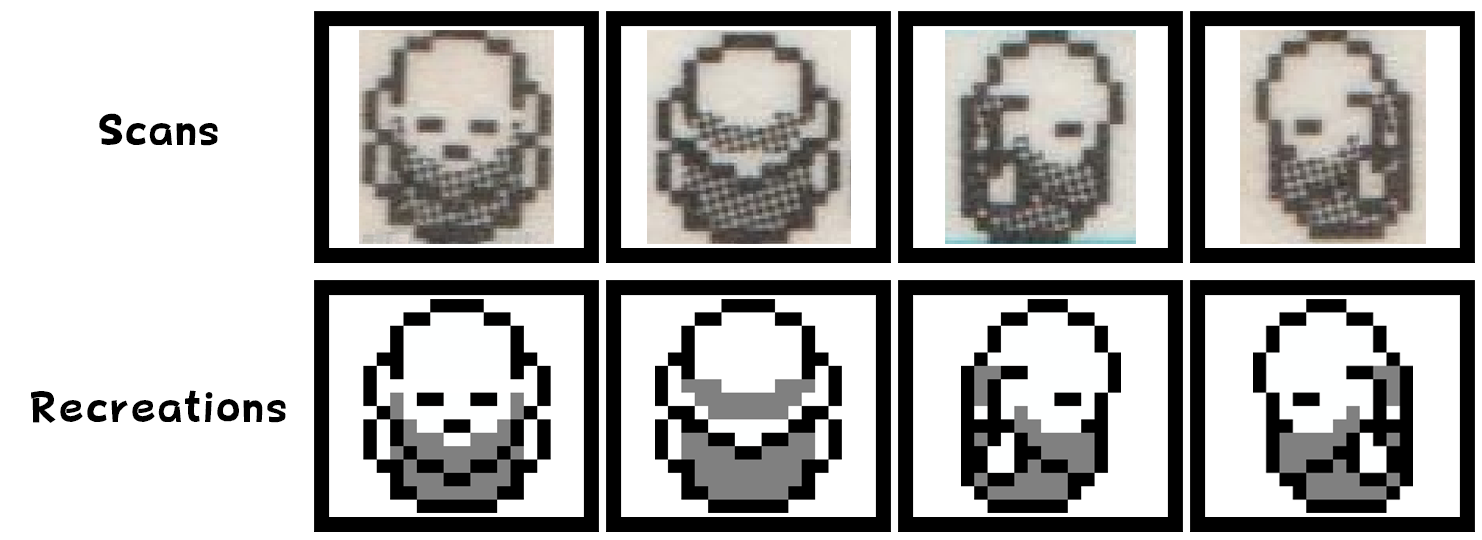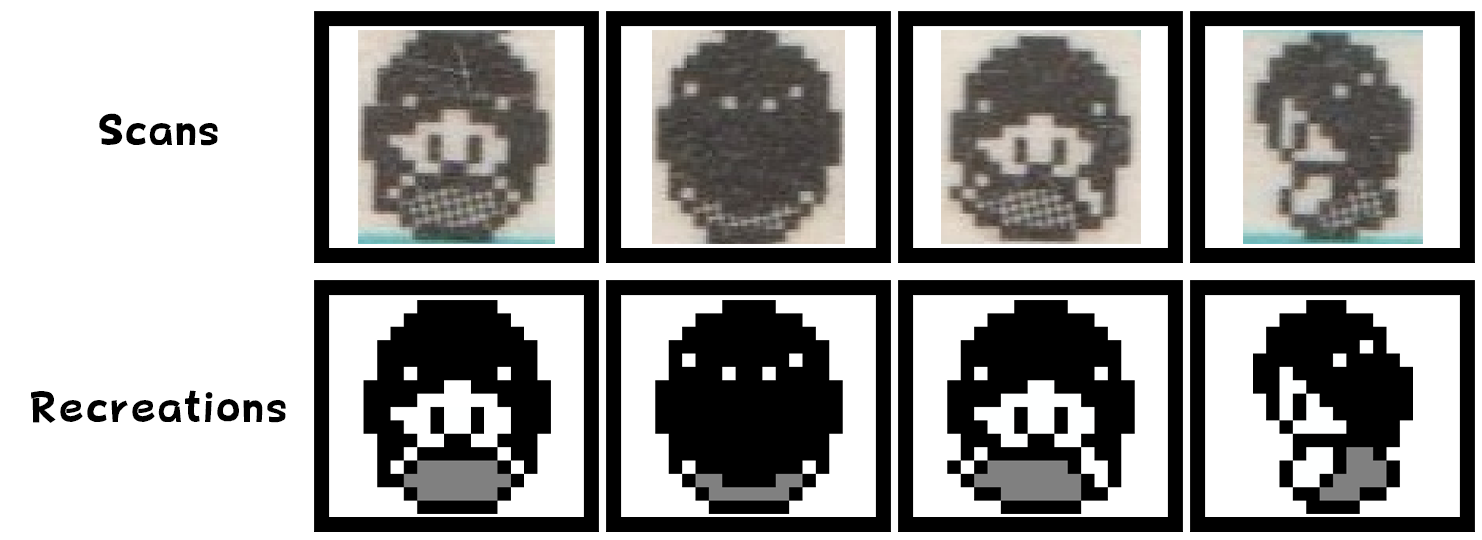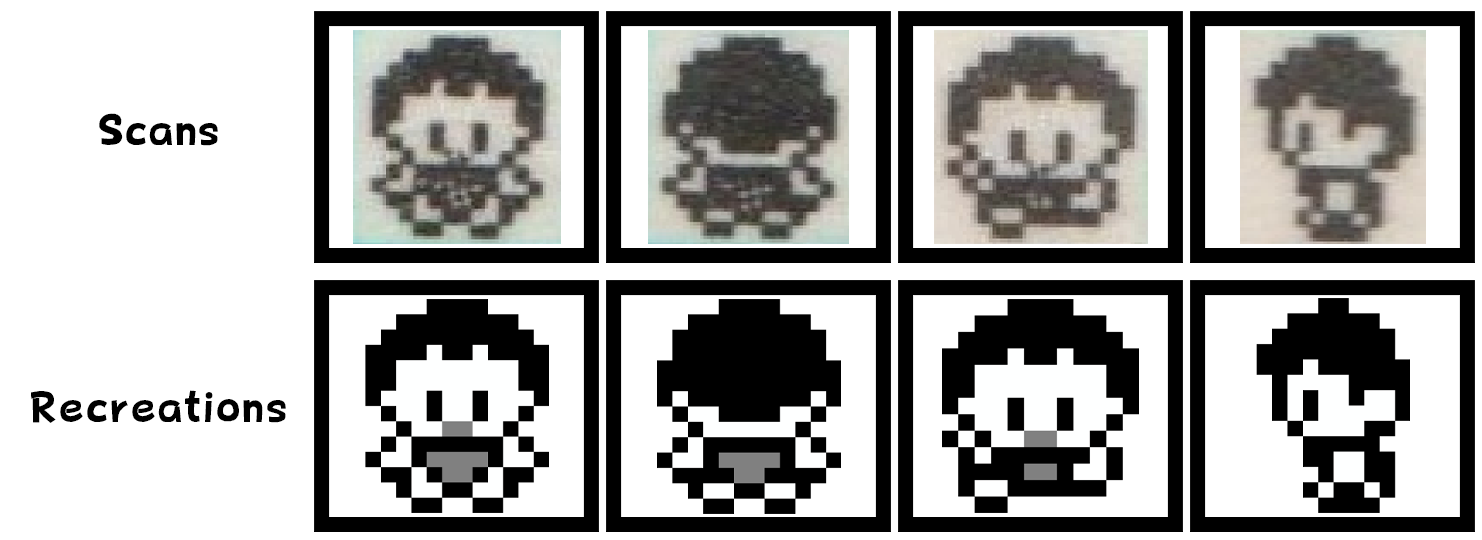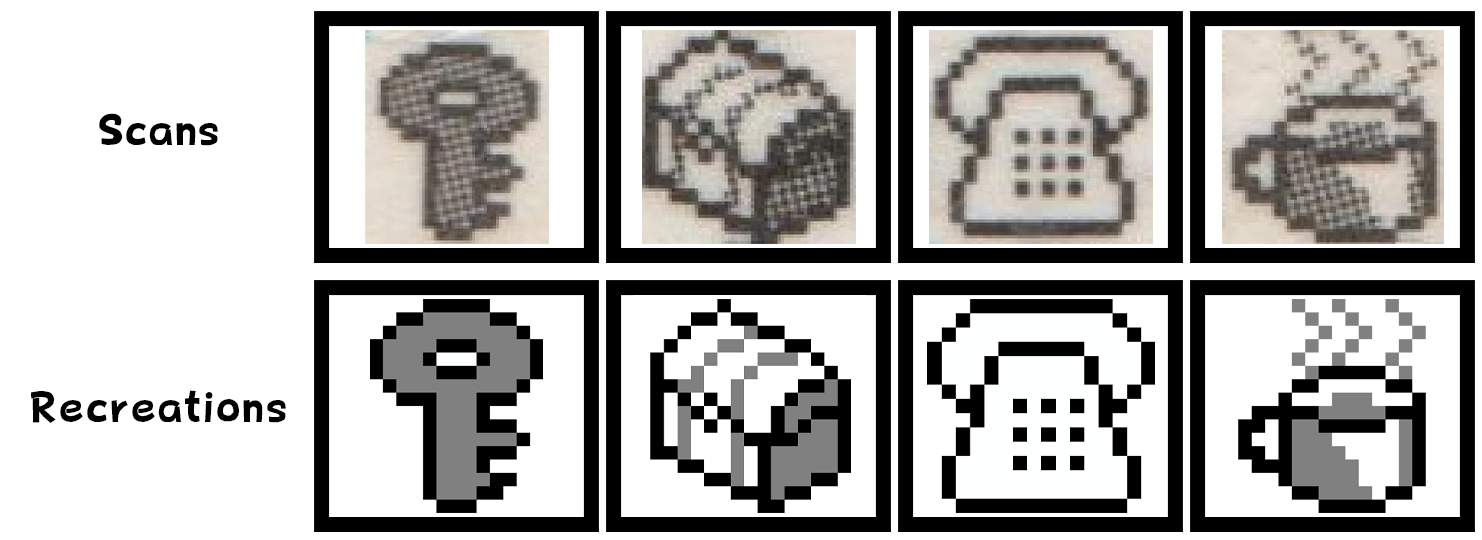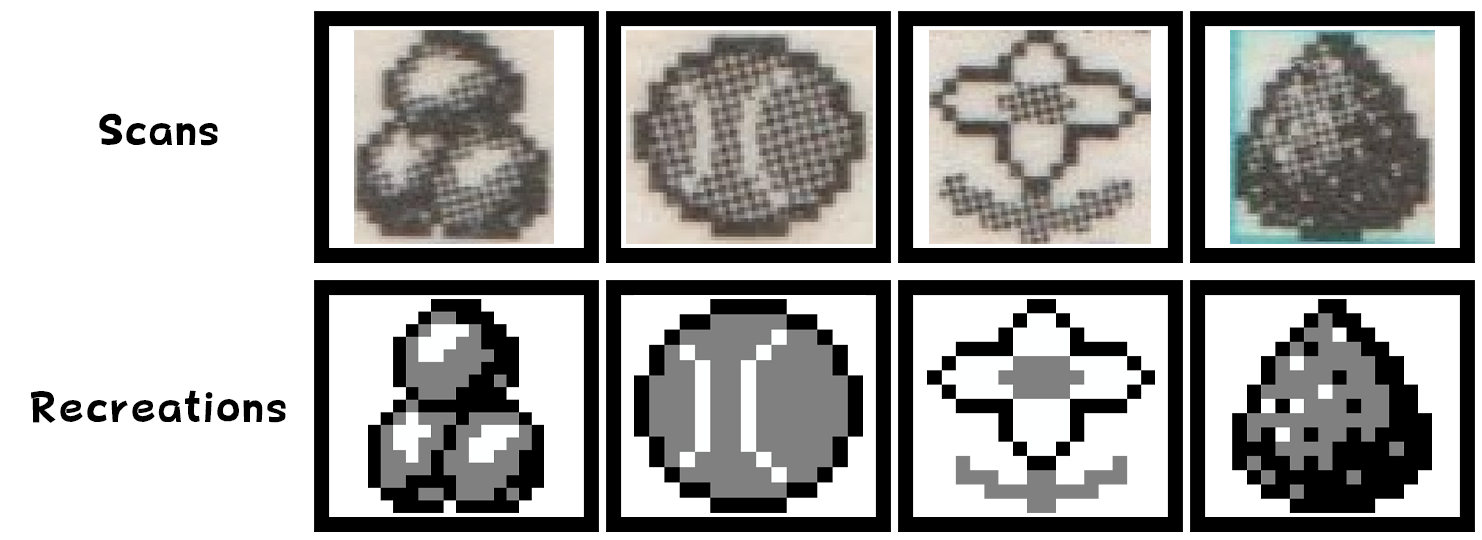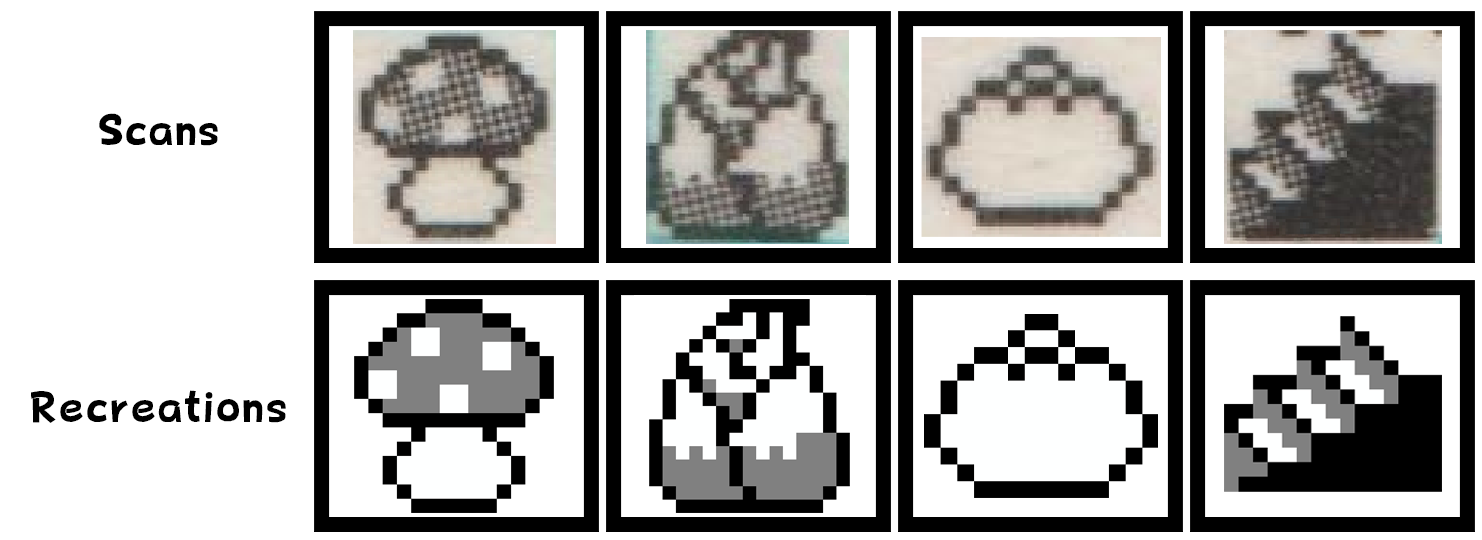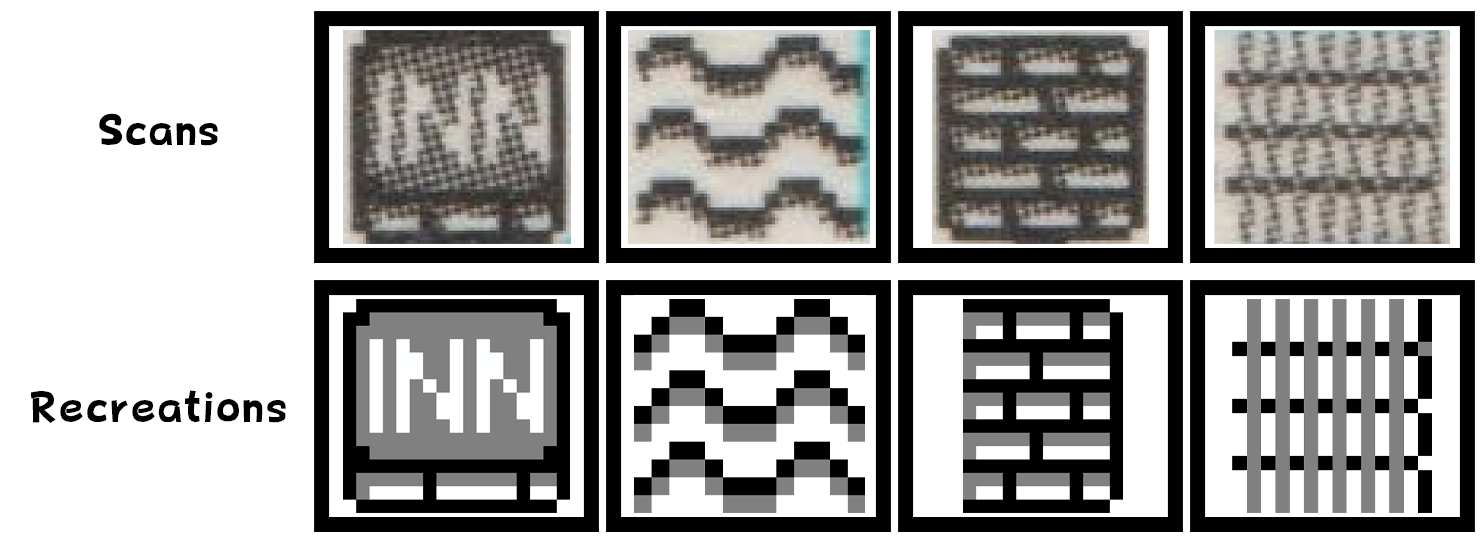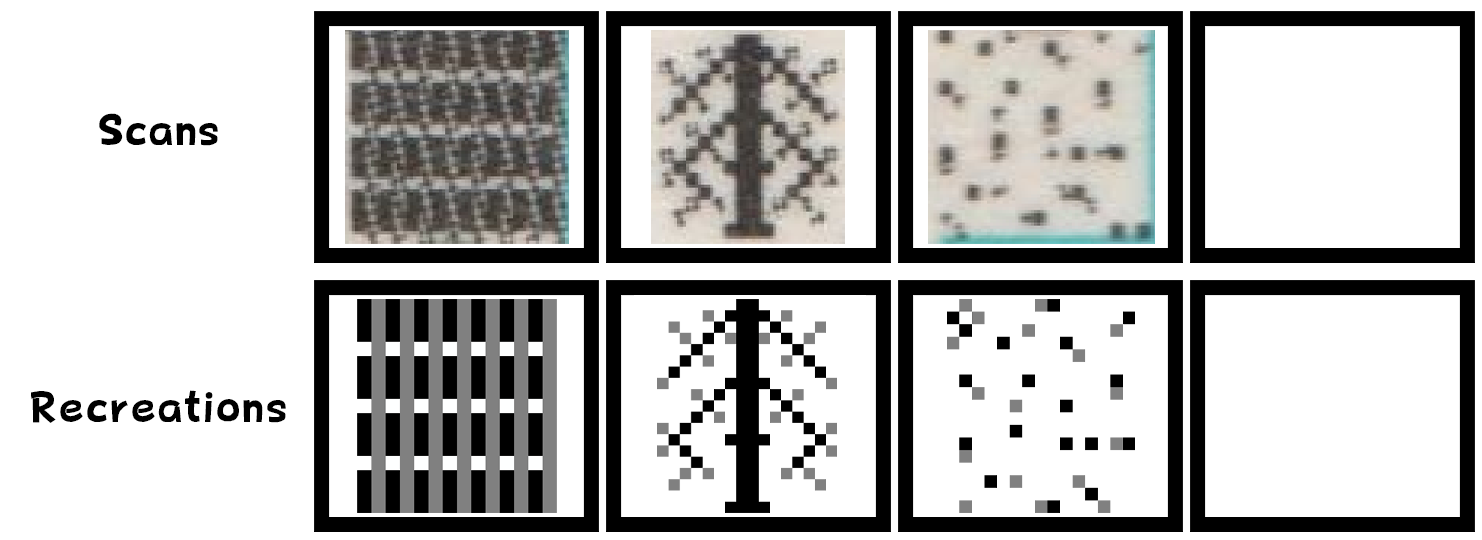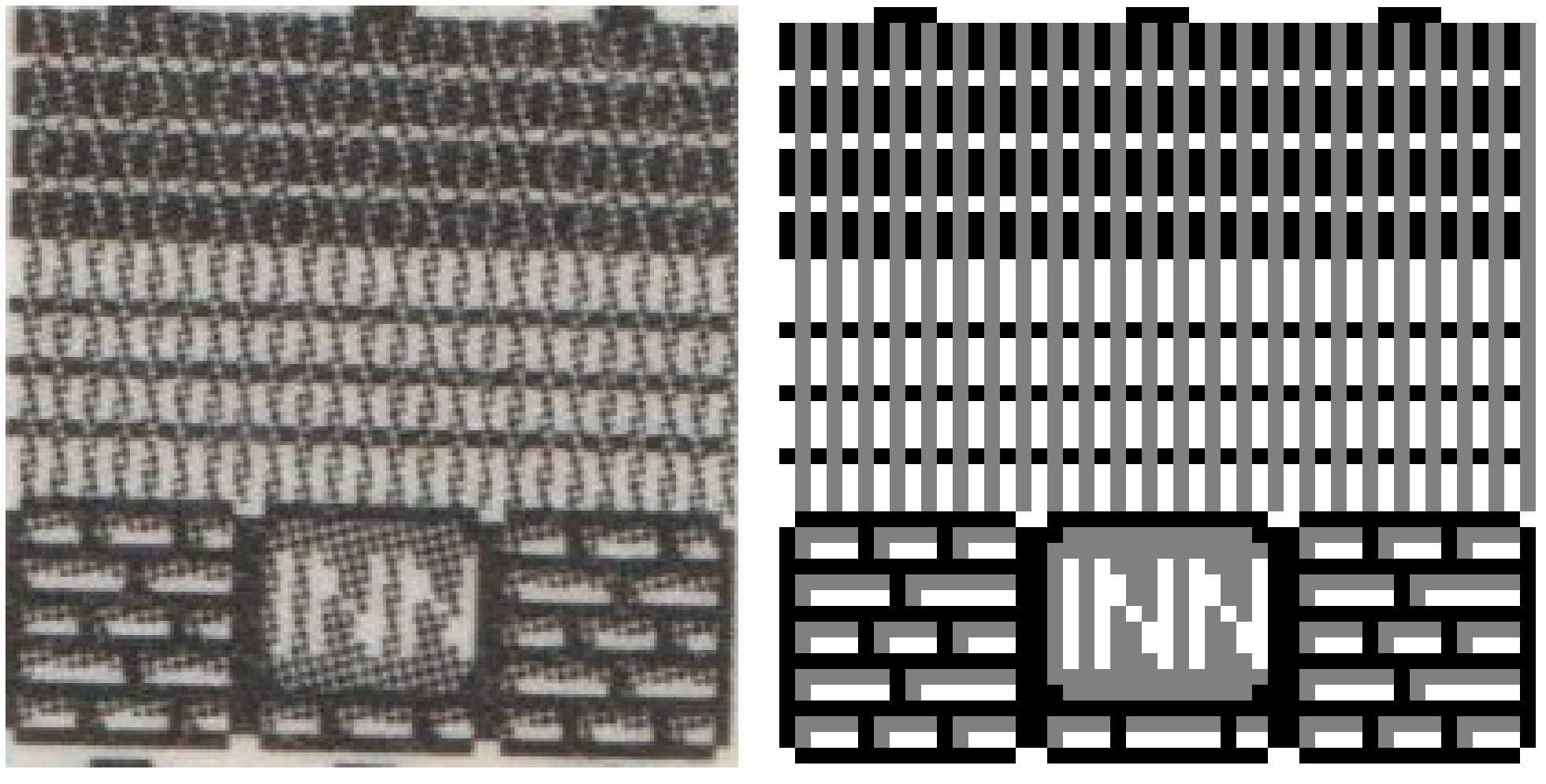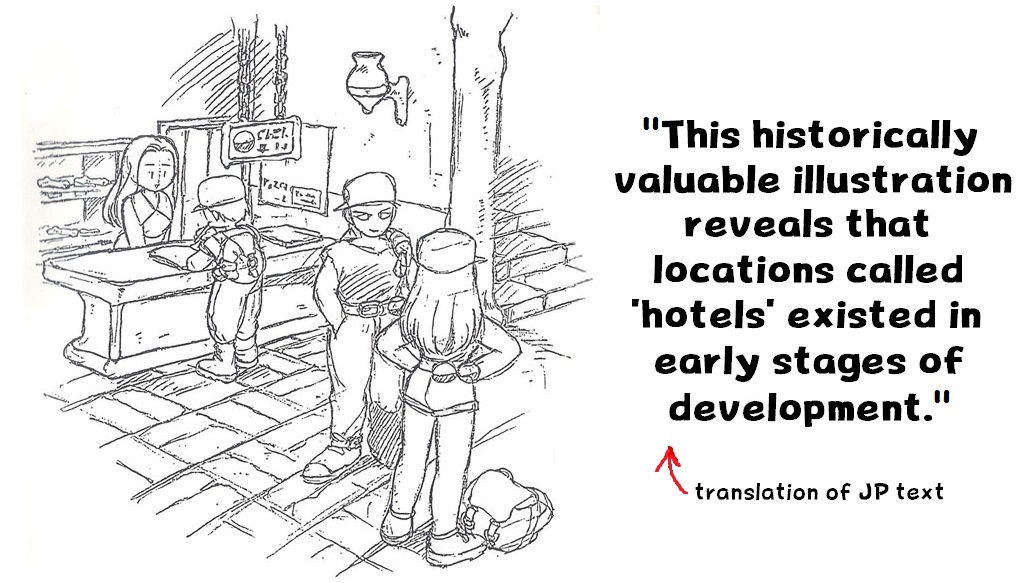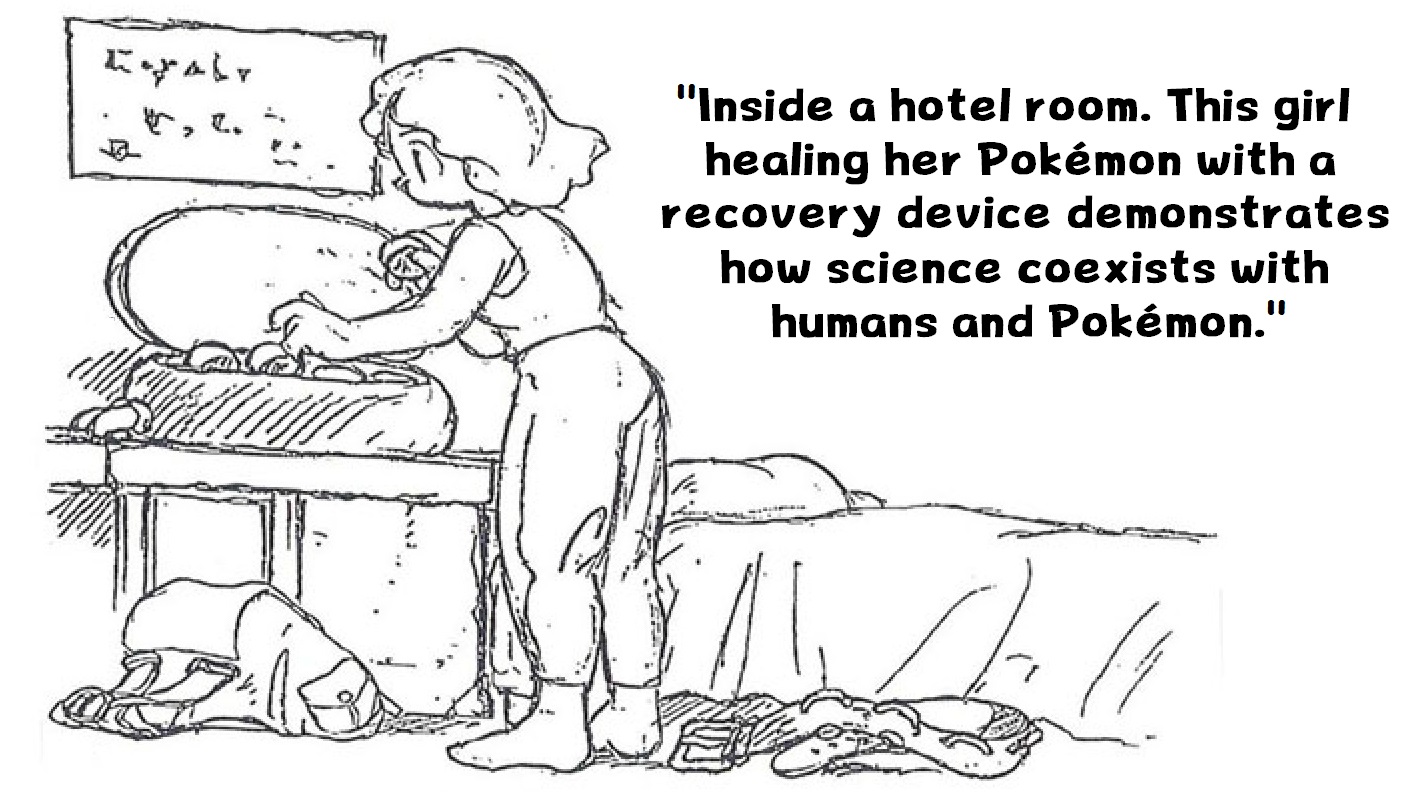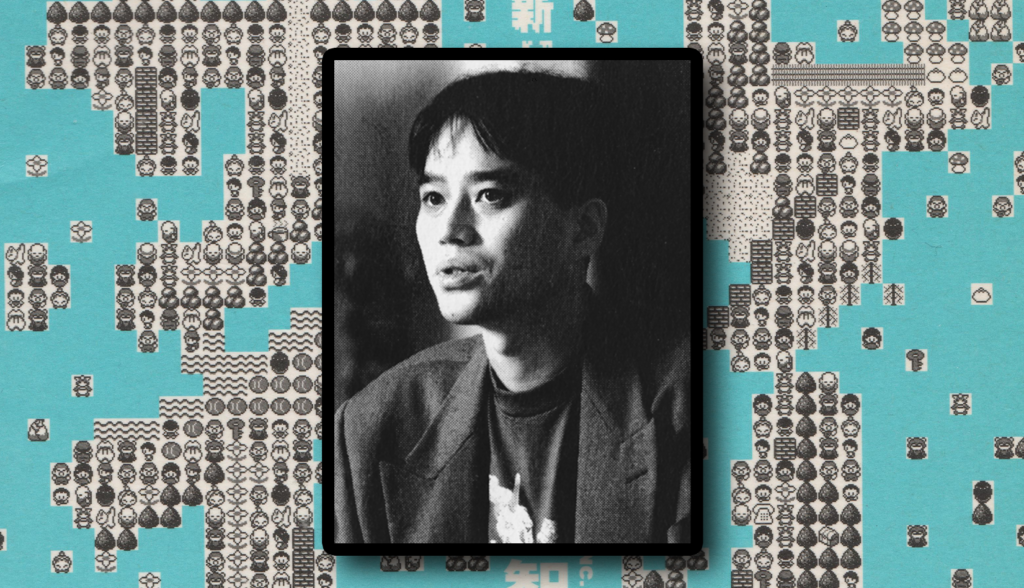
Translation: Satoshi Tajiri’s Book “New Game Design,” Includes Beta Sprites
Restoring the rarest Pokemon book ever published
Written by Dr Lava • December 11, 2021
A few months before Pokemon Red & Green released in Japan, Game Freak’s founder Satoshi Tajiri wrote a book called New Game Design, which was published by Enix in December 1995. Most of its 160 pages cover Tajiri’s thoughts on games like Super Mario Bros and The Legend of Zelda, while others focus on games developed by Game Freak, like Yoshi and Pulseman. Only four pages are dedicated Pokemon (156-159), although the front and back covers of the book feature 45 beta sprites for Pokemon’s characters, creatures, items, and locations. The article you’re reading now will only cover the book’s Pokemon-related content.
When Tajiri wrote these pages, his primary purpose was explaining the Pokemon concept to gamers who’d never heard of it before. There aren’t any explosive revelations, but we do get some insight into his inspirations, like the Japanese cultural artifacts that led to Pokemon cries and the Pokedex.
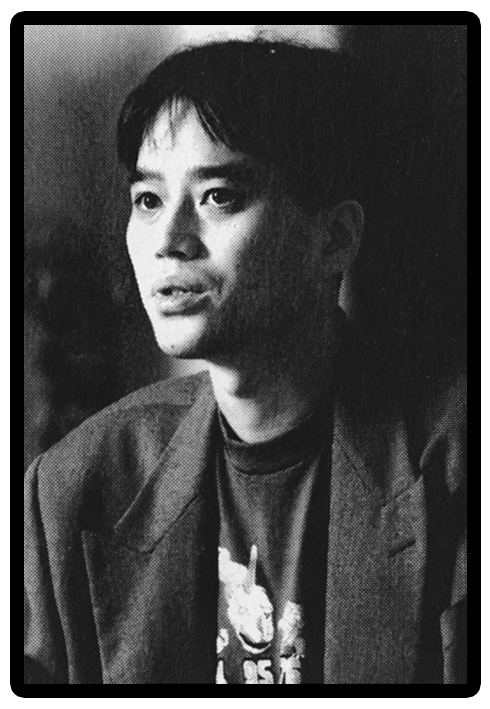
Pokemon didn’t exist yet when New Game Design was published, so it wasn’t exactly a best-seller. As a matter of fact, it only sold 15,000 copies. Many have been lost to time, and nowadays it’s probably the rarest and most expensive Pokemon book ever published. When I went looking for it, only one copy was for sale online — it was on a Japanese auction site, and sold for over $500. Fortunately a girl named Evie had a copy and was kind enough to scan it for me. It wasn’t in the best shape, so I cleaned it up in Photoshop to make it look new for this article, and hired Japan-based interpreter Jacob Newcomb to translate the text into English. I’ve also added some of my own commentary, providing extra information and context where I think it’s necessary.
So a big thanks to Evie and Jacob, and also to my Patreon supporters who fund these preservation projects. With that lengthy introduction out of the way, let’s get into the translation.
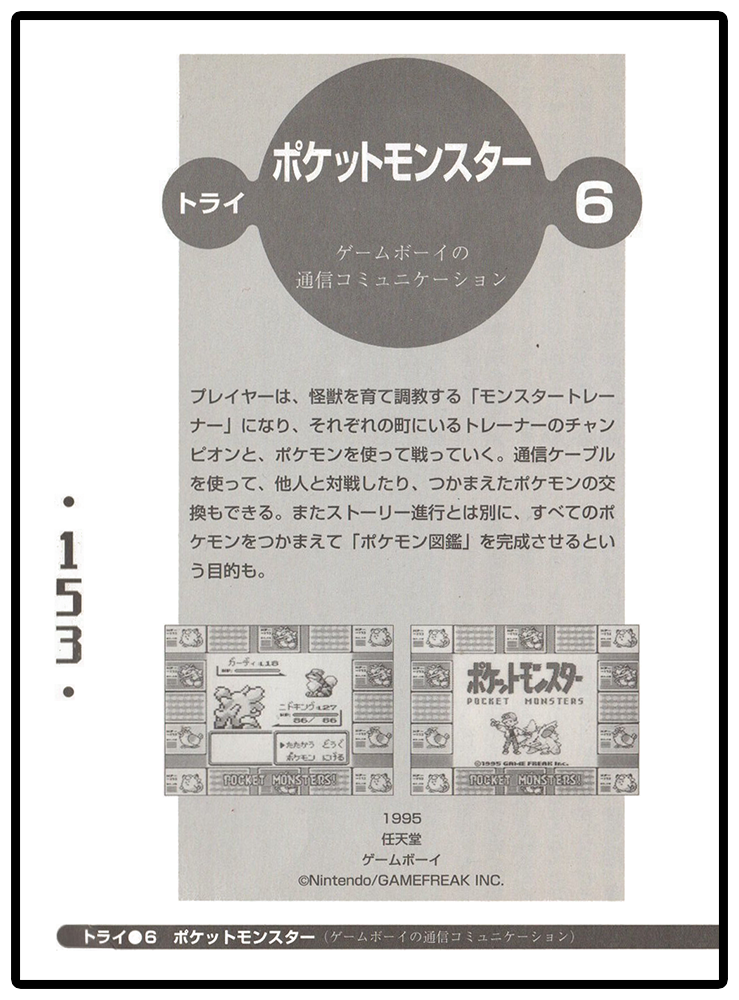
Try Pokemon: Game Boy Link Cable Communication
The player raises and trains monsters to become a “monster trainer,” and travels to various towns to have their Pokemon battle trainers and champions. With the Link Cable, you can battle other people and trade the Pokemon you’ve caught. In addition to advancing the plot, another objective of the game is catching every Pokemon to complete the “Pokedex.”
Dr Lava notes: Nothing of note is written on this first page, but the early title screen is worth comparing to the title screen as it appears in the game’s final build. First of all, there’s no mention of Red or Green in the early screenshot — this book makes no mention of Red or Green either, so the title screen appears to pre-date the idea of splitting the game into two halves, which happened pretty late in development. Another thing you might notice is the difference in Red’s clothes. Fortunately, a 2019 leak gave us access to digital versions of these assets. Here’s a pixel-perfect comparison below.
Red’s jacket is different, and he’s using his left hand to pet Nidorino. Nidorino’s sprite changed as well, with the earlier version being larger and sporting a few other slight revisions. Beta Red petting Nidorino is actually one sprite, not two. Interestingly, Nidorino doesn’t appear at all in Red & Green’s final title screens.
Different versions of Red and Nidorino are pretty interesting, so I commissioned Rachel Briggs (aka RacieBeep) to recreate these beta sprites in Ken Sugimori’s iconic watercolor style (pictured above). One more thing worth noting is that the book’s screenshot also has a Super Game Boy border that can’t be found in the final game. This and another SGB border were also revealed by the 2019 leak.
By the way, you can click any image in this article to enlarge and zoom in. Okay, let’s turn to the book’s next two pages. Except for the book cover, from here on out it’s all text, no screenshots. But there are some elements of Japanese culture and technology you might not be familiar with, so I’ll explain them in the notes following the translated text.
Page 154
When a new game console comes out — before we ever even touch it — gamers’ imagination runs wild wondering what it’s going to be like. However, there’s usually a gap between our imaginations and what the console really is. But this difference can motivate people to dream up new game ideas. When I first got my hands on a Game Boy, I’d heard about the Link Cable, and I had high expectations for it. But the Link Cable ended up mostly just being for competing with other players. The linking I’d imagined was more like what I saw on kaiju shows back when I was little. My idea was more like an exchange of information, like a radar picking up signals and printing a piece of paper saying a kaiju just appeared in Tokyo Bay. But the Game Boy’s Link Cable was really just for showing your opponent’s screen in Tetris and things like that, and it seemed like they only added the connectivity function for business purposes. So I decided to make a game that could bridge the gap between the connectivity I imagined, and what the Link Cable could actually do. That’s what Pokemon is.
When we started the Pokemon project, the features of the console we’d choose to develop for were very important. After some consideration, we realized Game Boy was the only console that offered connectivity features. Devices like Zaurus and Mac have infrared sensors on the back called IR ports that you can use to exchange data — but the living creatures known as Pokemon move from one Game Boy to another person’s Game Boy, and that unprecedented gaming concept is very appealing.
For Pokemon, we built a robust game system that promotes meaningful connectivity. As a kid I was obsessed with collecting Menko and Robocon cards, and other people feel the same way about stickers or stamps. The ability to trade is one of the key aspects of their appeal. That’s why I wanted to make a system where you take these kaiju-like pets — Pokemon — and raise them, and trade them freely over a Link Cable.
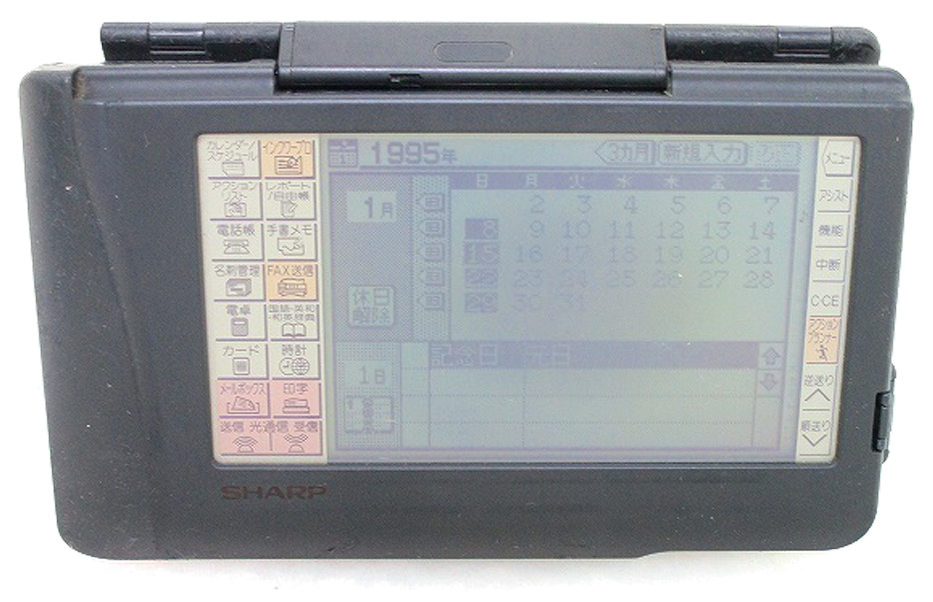
Dr Lava notes: Before smartphones, techie people in the 1990’s used something called a PDA (personal digital assistant). They were produced by a number of companies including Apple, but the most popular in Japan were Zaurus made by Sharp. Before starting development on Pokemon, Game Freak made games for both Nintendo and Sega consoles, and they were published by a variety of companies including Sony and Namco. So it would’ve been very possible to release Pokemon on any console — including PDA’s that could use IR ports to trade and battle — but ultimately Tajiri chose to pitch his idea to Nintendo, and develop it for Game Boy.
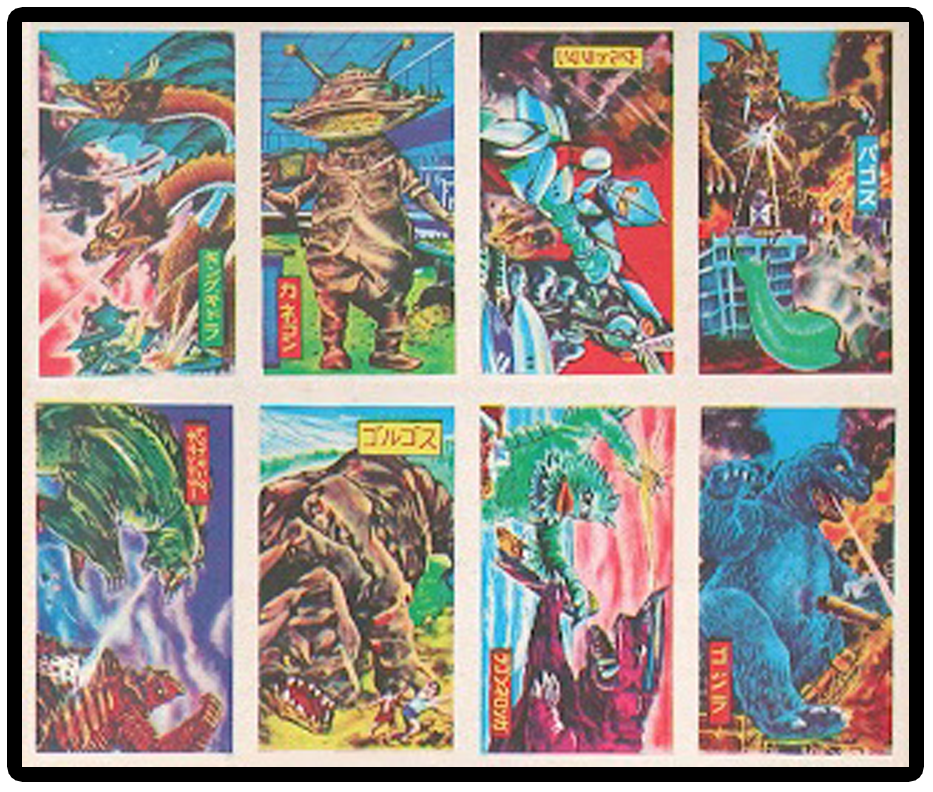
Tajiri’s said in several other interviews translated on this website that both Menko and kaiju were key to his inspiration to make Pokemon. I’ve explained more in-depth in other articles, so I’ll keep it simple this time. Kaiju are the giant monsters seen in Japanese movies and TV shows — Tajiri’s favorites were the ones he saw in Godzilla and Ultraman. Menko are cards that Japanese kids collect and battle, sort of like Pogs that were popular in America in the 1990’s. In many ways, Pokemon is just a video game version of kaiju Menko cards. In fact, when Tajiri first went to his partner Ken Sugimori to explain his idea, he said “it would be like how we used to trade Menko cards back in the day.”
Page 155
Then we created the Pokedex as an equivalent to a Kamen Rider trading card album. The Pokedex was something we added mid-development as a bonus, but it made the game feel more complete, so we made it a major in-game objective.
The connection that occurs in Pokemon is a form of bartering. Basically, if there are three Game Boys — let’s call them A, B, and C — A and B will connect and something’s sent from A to B. Then it’s sent from B to C when they connect. Thus, the thing originally held by A ends up in C’s possession, even though A and C never connected. There are lots of opportunities for these kinds of interesting interactions, thanks to the Link Cable’s networking capabilities.
For example, if you brought your game to school to show off a Pokemon you raised, and everyone traded during recess, your friend could send their Pokemon over to your Game Boy to battle, and you could trade back-and-forth. You can connect in lots of fun ways.
An Ultra Kaiju notebook I bought in kindergarten ended up becoming a valuable inspiration for Pokemon. Sometimes I still see them being sold when I go to retro stores. It’s a notebook with data for all the old classic kaiju written inside, but it also has a special flexi disc attached that plays the cries of all the different kaiju. I really loved it, and I remember having two of them when I was in kindergarten. When I started making Pokemon, I wanted to give the Pokemon cries too, and I decided to use that book as a source and make Game Freak’s sound expert Junichi Masuda listen to it. I’d lost the flexi disc, so I went looking for a retro toy store to replace it. I found one that had an old Ultra Kaiju notebook, but it was missing the flexi disc. After lots of effort I eventually found one, but I didn’t have a record player that could play small flexi discs, so Masuda borrowed a lady bug player from somewhere and played it on that. That resulted in the cries being added to over 100 Pokemon.
Dr Lava notes: If you’re not familiar with Kamen Rider, it’s very similar to Power Rangers. The show started airing on Japanese television in 1971 when Satoshi Tajiri was six years old, and there were trading cards of all the Riders and their various transformations, so fans swapped with their friends to collect them all. To keep their cards organized, kids put them in an album, also called a binder (seen above).
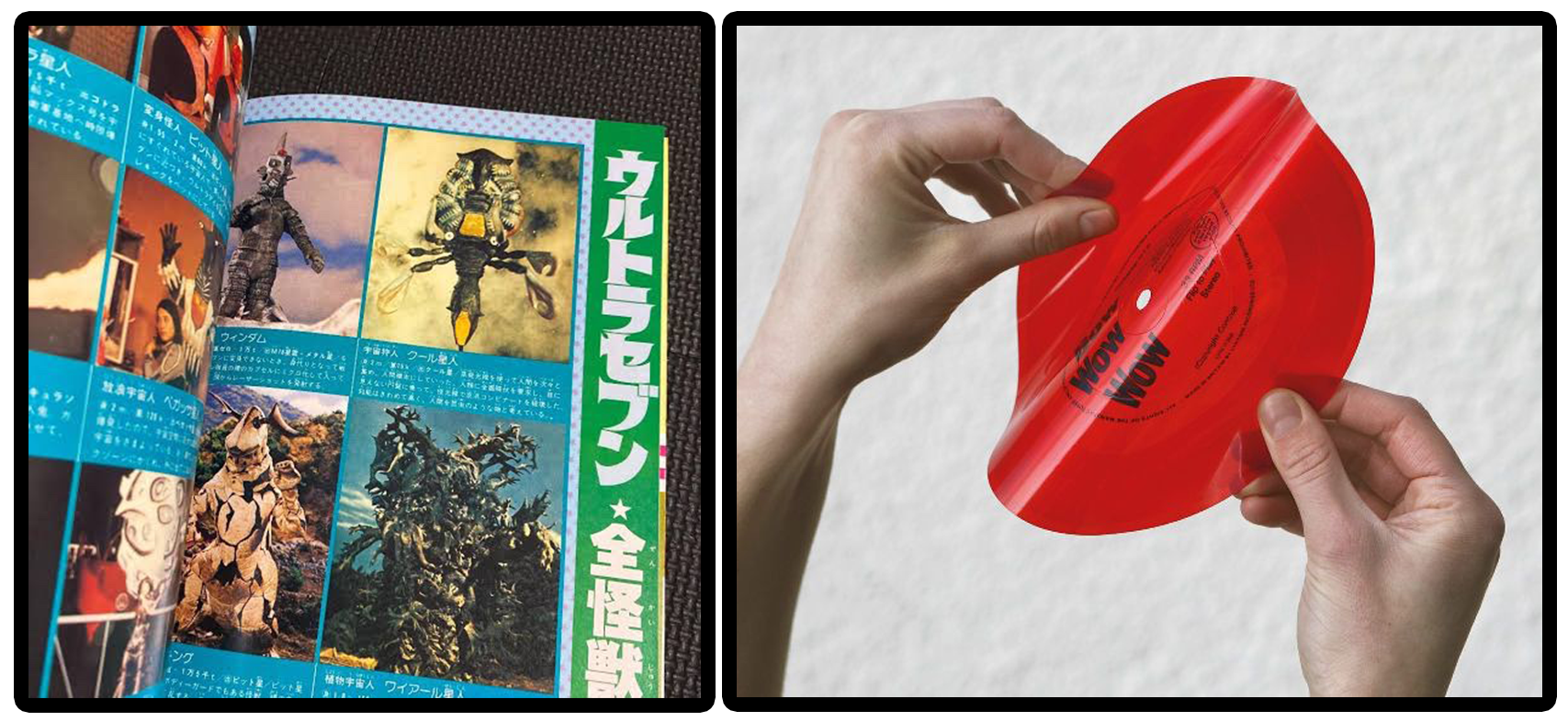
The Ultra Kaiju notebook Tajiri owned as a kid would’ve had pictures and data on all the major kaiju from various TV shows and movies. Kaiju have unique cries (like Godzilla’s roar or the sound Mothra makes, for example), and those cries were compiled on a flexi disc that came packaged with the notebook. Flexi discs are small, flexible vinyl records that weren’t seen much in the West, but fairly common other countries including Japan and the Soviet Union. So just to sum things up — the Pokedex is essentially a combination of the Kamen Rider trading card albums, and the Ultra Kaiju notebook packaged with the kaiju cry flexi disc. It’s no secret that Tajiri combined elements of his childhood to create Pokemon, but it’s cool to hear these specifics.
Page 156
Another distant inspiration for Pokemon was Dragon Quest. In Dragon Quest II, there’s an item called the Mad Cap. It’s a convenient item that reduces your MP usage by two-thirds when you use magic. But there’s only few monsters that drop it, and the drop-rate’s incredibly blow, so I was never able to get one. My friend had two though. Pokemon’s trading mechanic provides a solution to those sorts of situations.
Dr Lava notes: We’ve heard this story in a previously-translated interview. The friend Tajiri mentions is Ken Sugimori, who eventually became the very first Pokemon designer, as well as Pokemon’s art director. Dragon Quest II released on Famicom in 1987, about two years before Tajiri and Sugimori started actively working on Pokemon. Mad Caps are only dropped by certain enemies, and with a drop rate of only 1/128. It’s funny to think that if Mad Caps had a higher drop rate, Tajiri wouldn’t have been so desperate to trade for Sugimori’s, and thus might’ve never come up with the idea for Pokemon.
Okay, now let’s examine the beta sprites on New Game Design’s front and back covers. This copy was a little worn out — which is understandable considering it’s a 26 year old paperback — so unfortunately I wasn’t able to repair it in Photoshop as cleanly as the interior pages. But every beta sprite was reused over and over to form the book’s title, so it was easy to preserve each and every one. The covers were printed and scanned in high resolutions, which makes it possible to decipher each individual pixel. So to complement the sprites scans, I’ve hired Rachel Briggs (aka RacieBeep) to recreate all 45 beta sprites. Some were changed in Red & Green’s final build, but most were cut from the games entirely. So let’s have a look at them.
I commissioned RacieBeep to recreate these as well, so we can get a good look at them. There might be some misplaced pixels due to how tiny these sprites are on the book’s covers, but these should be good enough if someone wants to take these and insert them into a fan game or something. Pictured above appear to be Pokemon party sprites — what you see in the pause menu. The first two were revised and included in the final game, but the other two were cut entirely.
This was definitely an overworld sprite, since it has four different perspectives for walking around. To me it looks like a cat, but like all Game Boy sprites, there’s room for interpretation.
These appear to be overworld sprites for Trainer Red. The main differences are his hat and lack of a backpack.
Overworld sprites for a bald old man with a beard, possibly an early design for Professor Oak.
Overworld sprites for a woman and child.
Overworld sprites for a key, treasure chest, telephone, and a cup of tea (or maybe coffee).
Overworld sprites for seeds (?), a tennis ball, flower, and a tree.
Overworld sprites for a mushroom, two things highly open to interpretation, and a set of stairs.
Overworld sprites for an Inn sign, what appears to be water, bricks, and another wall texture.
Overworld sprites for what appear to be another wall texture, a wintry tree, and snow.
And this one was a little more difficult for Rachel to recreate, but it’s clearly an inn. Inns (also called hotels) were featured prominently in early Ken Sugimori concept art. Below are a couple translated pieces that were published in the 2009 Japanese book “Satoshi Tajiri: A Man Who Created Pokemon.”
Closing Comments
And that brings us to the end of this translation. Admittedly, it’s not the most exciting Pokemon book I’ve had translated for this website, but it does give us a good look at Tajiri’s inspirations for Pokemon and some of Game Freak’s ideas that didn’t make it into Gen 1. And it’s such a rare book that if it was never translated, folks would be wondering what treasures were hidden inside for all eternity. Mystery solved.
If you’d like to see more translations of old Pokemon books and magazine, check out this website’s homepage. There’s quite a few of them. And if you’re still hungry for more after that, I hope you’ll consider supporting these translations for $5 a month on Patreon. It helps keep the translations coming, and there’s 5 or 10 Patreon-exclusive translation articles only available on Patreon (although most will eventually be made freely available on this website). Thanks for reading.
Read More Pokemon Translations:
• Interview: Sugimori and Masuda discuss Gen 1’s development
• Interview: Sugimori explains Gen 5 Pokemon design origins
• Book: Japan-exclusive Pokedex translation (1996)
Videos About Pokemon History:
• Video: Sugimori Explains Gen 5 Beta Pokemon
• Video: Gen 4 and 5’s Scrapped Lock Capsule Event
• All Videos: Gen 4’s Internal Data and Cut Content
